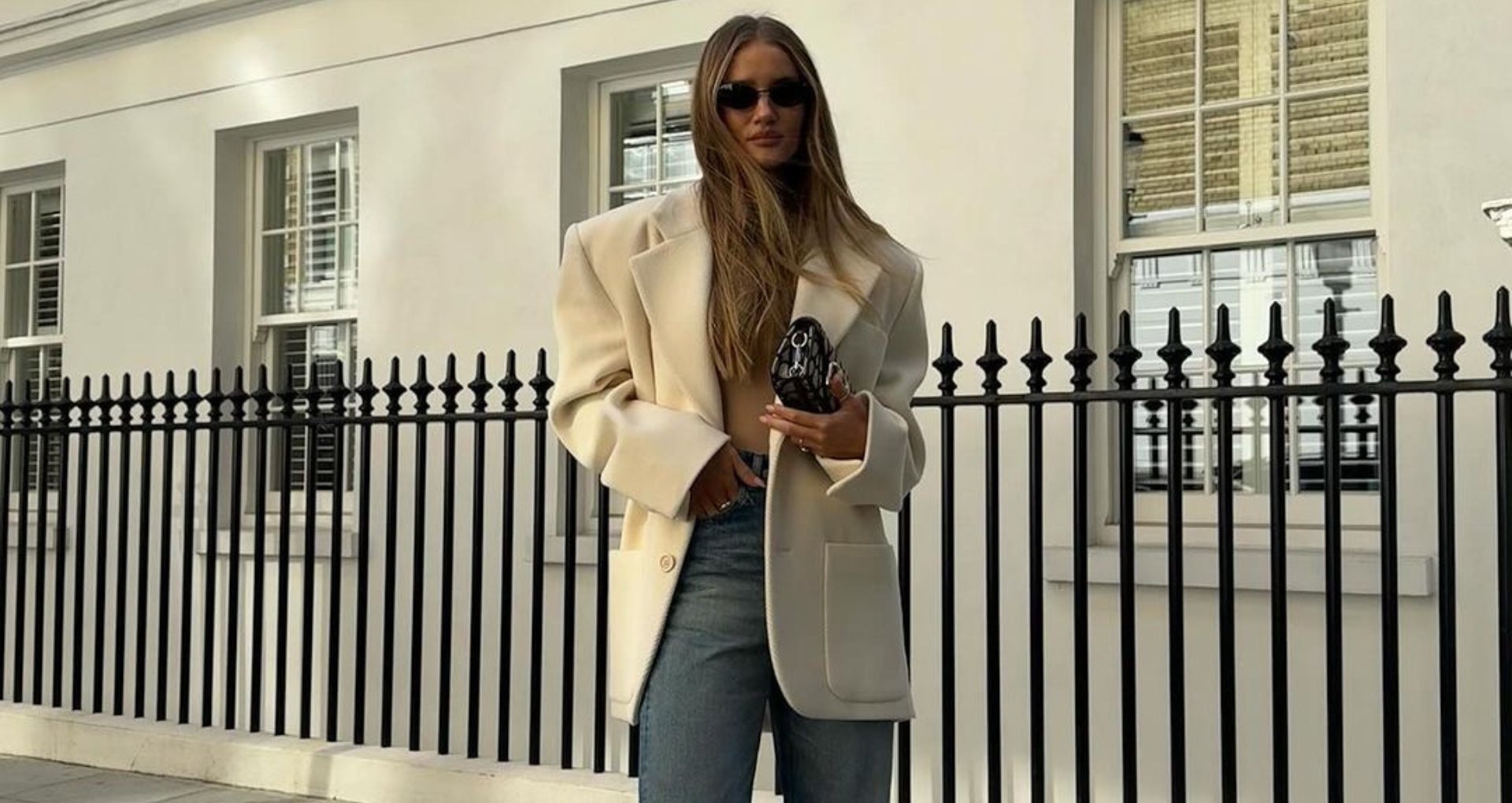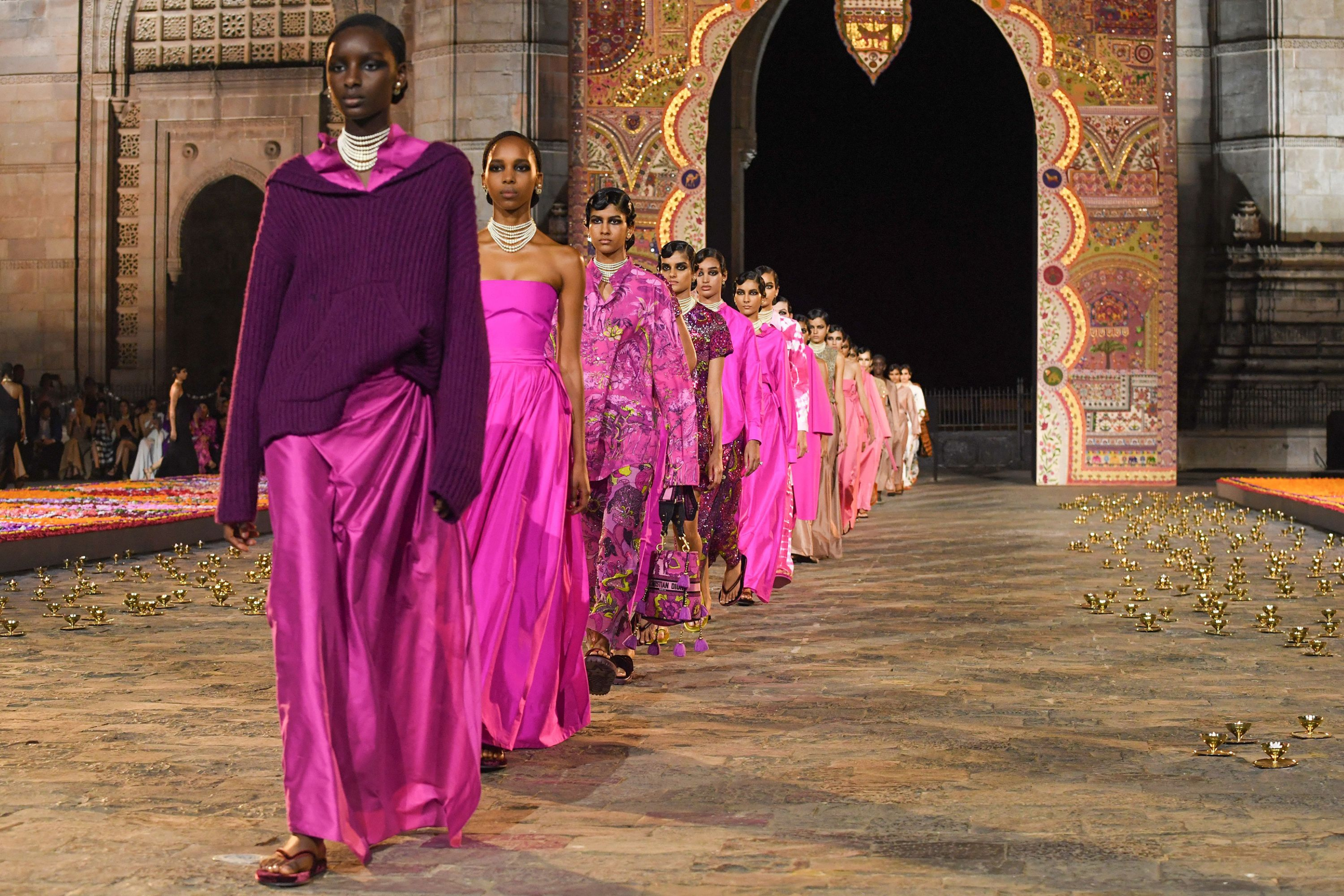
My parents’ story of migration from Singapore to Swinging London in the ’60s has always been sewn into the vibrant and eccentric textiles of our home, where Madras checks clash with ’70s wallpaper florals while embroidered Chinese silks jostle with British suburban styling. Yet despite being the product of this joyful and often chaotic print culture, with the rise of quiet luxury, I’ve dutifully purged pattern from my wardrobe, one tailored neutral at a time. But is this spirited palette the only thing being muted?
According to Amber Butchart, Guest Curator of exhibition The Fabric of Democracy: Propaganda Textiles from the French Revolution to Brexit, at the Fashion and Textile Museum in London until 3 March 2024, “It’s safe to say that from the dawn of human history, adorning the body has been seen as a fundamental way of communicating on a particular level.” Yet, if fashion is a form of self-expression, why are we choosing to lower our voices, and what do our hushed, neutral tones tell the world?
Amber explains, “A lot of fashion history is very bound up around ideas of status and display. Quiet luxury operates in the opposite way to how fashion has functioned as a status identifier in the past.” The fashion historian, broadcaster, author and elaborates, “Kings or queens might wear fabrics like cloth of gold, or cloth of silver or encrusted with jewels, literally wearing their wealth on their sleeve.” However, this notion is subverted when this signifier is removed. “Quiet luxury is the opposite of that and requires a particular amount of cultural capital and knowledge of these brands to be able to identify that although they may look ordinary to a regular observer, they are actually incredibly high-cost, high-status pieces. So now there’s an added layer of not only wearing your wealth on your sleeve but this being evident only to a very select number of people who might be operating in the same kind of social groups as you. It’s effectively a way of status dressing that’s not using really obvious branding or logos to show off the fact that this is status dressing.”
“A lot of fashion history is very bound up around ideas of status and display. Quiet luxury operates in the opposite way to how fashion has functioned as a status identifier in the past.”
Contrary to my concerns, rather than being silent, Amber insists that quiet luxury is actually sending a deliberately constructed message to the one per cent. “There is a tone of communication, but it’s very much very communication that you only understand if you are operating within those particular circles – part of a select group of people who will recognise the brands you’re wearing without them being very obvious, and who will understand the costs involved as well.”
As the United Nations Climate Change Conference UAE (COP28) draws to a close in Dubai, the subject of sustainability remains at the forefront of all our conversations about fashion – as it should. Yet making an effort to shop more mindfully doesn’t begin and end with buying the styles with staying power, in terms of aesthetics and quality that denote quiet luxury. This has been acknowledged by everyone from Chanel and Dior to government initiatives across the Middle East, including House of Artisans and the Ministry of Culture in Saudi Arabia.

Earlier this year, Dior’s Artistic Director Maria Grazia Chiuri turned the Gateway of India into a marigold-strewn runway for a Dior Pre-Fall presentation in Mumbai, acknowledging the Chanakya Ateliers’ long history of craftsmanship and contribution to the designs of the Maison, while fostering economic independence for local artisans. And the city of Manchester is still basking in the glory, and confusion, of being chosen by Chanel to host this year’s Métiers d’Art show – a collection that presents and preserves the mastery and savoir-faire of its ateliers in Paris.
Meanwhile, in the Middle East, the House of Artisans at Qasr Al Hosn, supported by the Department of Culture and Tourism – Abu Dhabi, celebrates the creative and artistic relationship between the UAE’s craftspeople and its natural resources, best demonstrated by the preservation of Al-Sadu weaving, a tradition practiced by Bedouin women, and, in 2011, inscribed onto the UNESCO List of Intangible Cultural Heritage in Need of Urgent Safeguarding. And in Saudi Arabia, Shahd AlShehail of Abadia – part of the Fashion Commission’s sector-building Saudi 100 Brands mentorship programme under the Ministry of Culture – is empowering local artisans by incorporating heritage techniques into her modern interpretation of modest dressing. All these endeavours redefine the idea of luxury in fashion beyond its monetary value and more as a contemporary means to preserve local craftsmanship through the generations, and find a way to stitch our material heritage into the current zeitgeist.
At its most radical, fashion can show the world who we are and what matters to us. Amber’s exhibition, The Fabric of Democracy: Propaganda Textiles from the French Revolution to Brexit, features many “clear examples of clothing being used in an ideological way”. And, as designers such Vivienne Westwood and Katharine Hamnett proved with their social and climate activism, luxury is at its loudest when making a political point. Amber confirms, “It is absolutely true that textiles have also been a part of both protest and propaganda throughout history. And they can be definitely be a tool for liberation and freedom in a number of ways. It quite often depends on which side of the argument you are on as to whether you see it as protest or whether you see it as propaganda.”
“It is absolutely true that textiles have also been a part of both protest and propaganda throughout history.”
Should fashion ever be quiet? It’s no surprise that Amber, as the curator and collector behind an exhibition on protest and propaganda textiles, believes not. Our clothing has a currency that is far greater than its cost, and the limitations of stealth wealth – or aspirations thereof – is that it only seeks to boast about our bank balances, not our beliefs, at a time where it’s never been more important to make our voices heard.
This story first appeared on GRAZIA International.
